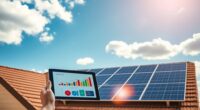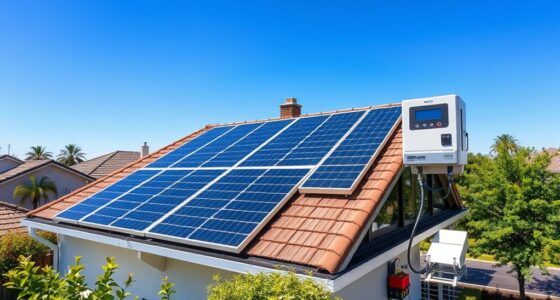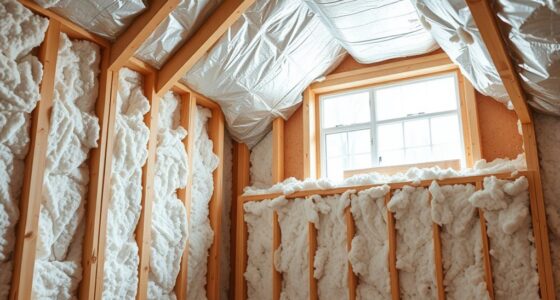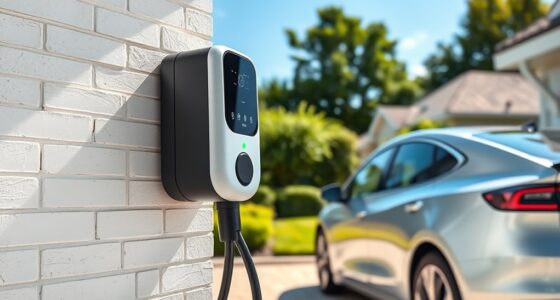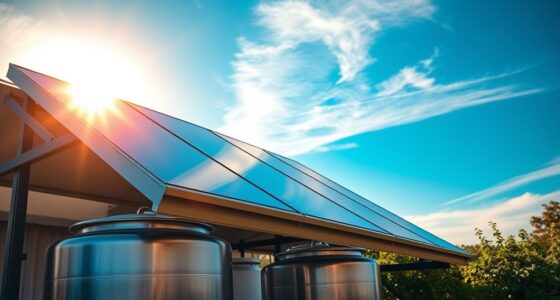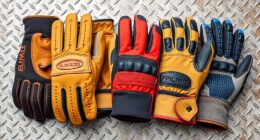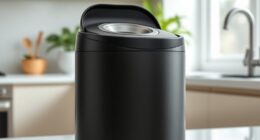If you’re considering small wind turbines for your home, it’s important to understand costs, which can range from $15,000 to $50,000, depending on size and components. They require adequate wind speeds of at least 5-10 mph to generate meaningful energy, and installation involves foundation work, tower setup, and wiring. Proper site assessment, compliance with local regulations, and regular maintenance are key to making the most of your system. Keep exploring to discover how you can optimize your wind energy setup.
Key Takeaways
- Installation costs vary from $15,000 to $50,000, depending on turbine size, tower height, and site conditions.
- Ensure your location has average wind speeds of at least 5-10 mph for effective energy generation.
- Proper site assessment and compliance with local regulations are crucial for safe and efficient installation.
- Regular maintenance and performance checks maximize turbine lifespan and optimize energy output.
- Energy produced can be used directly, stored in batteries, or fed into the electrical grid.
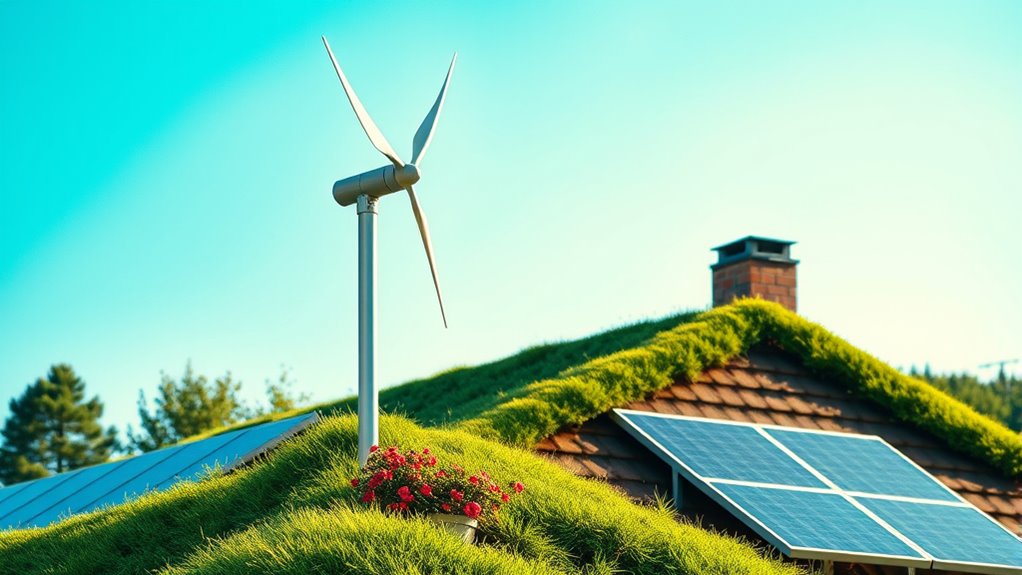
Are small wind turbines a viable option for generating clean energy at home? If you’re considering renewable energy solutions, small wind turbines can be an effective choice, but their feasibility depends on several factors. First, the cost varies considerably, typically ranging from $15,000 to $50,000 for installation. This depends on the size of the turbine, tower height, and additional components like inverters. The system generally includes a turbine, a tower, electrical connections, and often an inverter to convert the generated power into usable electricity.
Before investing, you need to evaluate your location’s wind conditions. Most small turbines require a minimum average wind speed of about 5 to 10 mph to operate efficiently. If your area doesn’t meet this requirement, the turbine’s energy output may be limited, reducing your savings and environmental benefits. When it comes to output, these turbines can produce between 2 kW and 10 kW, depending on the model and wind conditions. The higher your wind speeds and the more efficient your turbine, the more energy you’ll generate annually. This energy can be fed into your home, stored in batteries, or sent back to the grid if you have a grid-tie system.
Evaluate your wind conditions first; turbines need 5-10 mph for optimal efficiency and power output.
The installation process is straightforward but requires careful planning. You’ll start with preparing a solid foundation—digging a hole and pouring concrete to secure the tower. Next, the tower is assembled by connecting sections, often using press-fit pieces, and internal wiring is installed. Then, the turbine components—such as the nacelle, blades, and tail vane—are mounted onto the tower. Electrical wiring runs from the turbine to the inverter, often underground, and safety measures like anchoring the tower and securing electrical connections are essential to prevent accidents or damage. Conducting a site assessment beforehand ensures optimal placement and performance.
Once installed, your turbine’s annual energy production depends heavily on wind speed and turbine efficiency. Consistent winds generate more power, making your system more effective. Modern turbines tend to be more efficient than older models, and regular maintenance guarantees maximum performance and longevity. Keep in mind that turbines need periodic checks to operate smoothly over the years.
Finally, you should be aware of local regulations. Many areas have zoning laws, noise restrictions, and environmental assessments that could impact your ability to install a wind turbine. Checking these rules upfront helps avoid surprises and ensures your project complies with local standards. Small wind turbines can be a smart, eco-friendly addition to your home, but evaluating your wind resource, costs, and local regulations is key to making it a successful investment.
Frequently Asked Questions
How Much Noise Do Small Wind Turbines Generate?
You wonder how much noise small wind turbines generate. Typically, they produce less than 6 dB above ambient wind noise, which is quieter than a refrigerator. At 50 feet, they usually emit around 55 dB, well below recommended limits. Most of the noise is masked by natural sounds, making it generally unobtrusive. Mechanical noise can vary, but overall, small turbines are quite quiet and suitable for residential areas.
What Are the Maintenance Requirements for Home Wind Turbines?
You might think maintenance is a breeze, but neglecting it can turn your turbine into a rooftop paperweight. You should inspect your turbine every six months, checking blades, gearboxes, and wiring for wear or damage. Clean it every two years, lubricate moving parts, and follow the manufacturer’s schedule. Upgrading components and removing debris regularly helps keep it running efficiently—and saves you from costly repairs or environmental mishaps.
Can Small Wind Turbines Operate in Low Wind Conditions?
You might wonder if small wind turbines can operate in low wind conditions. The truth is, they struggle unless wind speeds are at least 4.5 to 5 meters per second. To make them work better, you’ll need to optimize blade design, install the turbine at higher elevations, and choose a strategic location. Keep in mind, energy output drops markedly in low wind, making them less cost-effective without incentives.
Are There Any Government Incentives for Installing Turbines?
You’re in luck—there are government incentives for installing small wind turbines. You can qualify for a 30% tax credit through the Residential Renewable Energy Credit, which is part of the broader Investment Tax Credit program. These incentives are a win-win, helping you save money while going green. Just make sure your system is under 100 kilowatts, installed by 2034, and meets all requirements to cash in on these benefits.
How Long Is the Typical Lifespan of a Home Wind Turbine?
You might wonder about how long your home wind turbine will last. Typically, these turbines have a lifespan of about 20 years. With regular maintenance every six months, you can extend their life up to 25 years. Factors like wind conditions, materials, and upkeep influence longevity. By properly caring for your turbine, you guarantee it remains efficient and functional throughout its lifespan.
Conclusion
Investing in a small wind turbine is like planting a seed for a greener future—your actions today can grow into lasting change. While it might seem like a small drop in the ocean, your decision to harness wind power can make a meaningful difference in reducing your carbon footprint. With careful planning and maintenance, you’ll find that this renewable energy source becomes a reliable partner, turning your home into a beacon of sustainability in a world enthusiastic for change.


